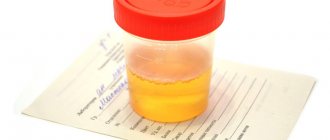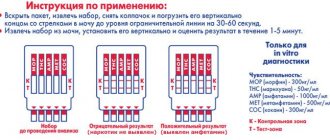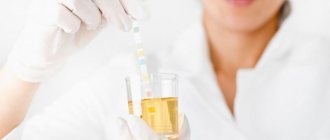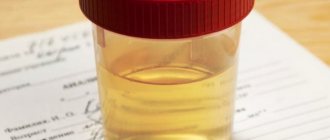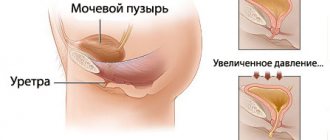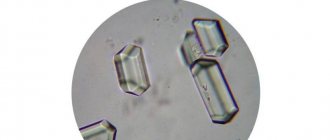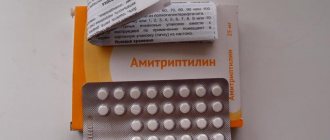A general urine test is a mandatory test for diagnosing various diseases. But sometimes it does not allow making an accurate diagnosis in order to prescribe the correct treatment. In such cases, a urine test according to Nechiporenko is prescribed. It is a microscopic examination. During this process, the number of cylinders, red blood cells and white blood cells in 1 ml of urine is counted using a special counting chamber. This allows you to accurately assess the condition of the urinary system.
Why is a test prescribed?
The test was originally developed to distinguish pyelonephritis from glomerulonephritis, but is now prescribed for any suspicion of an inflammatory process. It helps to evaluate the excretory function of the kidneys, the functioning of the renal tubules, the presence of kidney stones, the infectious nature of the inflammation, etc.
Urinalysis according to Nechiporenko is also important because it helps to diagnose infections of the genitourinary system at an early stage, when they often go unnoticed and therefore can be dangerous for the fetus.
Red blood cells in the urine of pregnant women - physiological reasons
We should not forget that red cells appear not only from pathologies, physiology also plays a role here, because during pregnancy the uterus increases in size. The process of its increase affects the ureters and compresses the bladder, thereby ensuring stagnation of physiological fluid. This inevitably leads to poor circulation and failure of the kidney filter, which is how red blood cells enter the urine. This is not dangerous for the health of the fetus and the woman.
It is also not uncommon for red blood cells to end up in the urine due to hormonal imbalances in the body. In this version, there will be very few red cells.
There may be cases when a pregnant woman develops red blood cells from stagnation of urine, which appears from the formation of stones and sand. Usually this process is accompanied by severe cutting pain, since as urine flows through the tubules, the formations scratch them.
A urologist will help you deal with the problem.
. This is a rather dangerous pathology, because it does not lead to single enzymes, but to a very large number of red cells in the urine. So large that the physiological fluid takes on a bloody tint.
How to donate urine according to Nechiporenko during pregnancy
- For 2 days, give up diuretics and coloring foods (beets, berries, etc.), follow a normal diet during pregnancy.
- Urine should be morning urine, collected after toileting the external genitalia. If showering is difficult, cover your vagina with a cotton swab while urinating.
- To analyze urine according to Nechiporenko, you need an average portion of material: first urinate for 2-3 seconds in the toilet, then fill the container a third and complete the process of urinating into the toilet.
- The sample must be delivered to the laboratory no later than 1-2 hours after collection.
The essence of the study
The essence of the study is a detailed study of urine to accurately diagnose the inflammatory process or pathology. The advantage and accuracy of the analysis lies in the technology of its implementation. A laboratory technician examines 1 ml of biological material, counting all microscopic components, while the OAM results indicate only their presence or absence.
When checking the source material, special attention is paid to abnormal components of urine. The casts that pass through the renal canal are counted using a microscopic method. A pathologically elevated level indicates an infection of a bacterial or other nature. This happens with glomerulonephritis, necrotizing vasculitis, and acute renal syndrome.
A high concentration of blood cells may indicate inflammation of the kidneys or urinary tract. The purpose of this test is to make an accurate diagnosis and prescribe the correct treatment.
Decoding the results
The test will show how many red blood cells, white blood cells and casts are contained in 1 ml of urine.
| Indicators | Norm |
| Red blood cells | No more than 2,000 |
| Leukocytes | No more than 1,000 |
| Cylinders | No more than 20 |
An increased level of white blood cells is a sign of inflammatory pathologies in the kidneys, bladder or vagina. The patient experiences general weakness, there is an increase in temperature, pain and pain when urinating.
The number of red blood cells is increased with nephritis, glomerulonephritis, stones, injuries and tumors in the kidneys. Their growth is also affected by excessive physical activity and dietary irregularities.
A urine sample containing more than 20 casts indicates inflammation in the renal appendages, renal failure, and dehydration. When making an accurate diagnosis, the doctor takes into account the combination of three analysis indicators, the patient’s condition, and data from additional studies.
How and why red cells appear in the urine of pregnant women
If red blood cells were detected in the urine of pregnant women
, consult a doctor to prescribe tests that will find the cause of the pathology. The most dangerous options here include cancer and kidney disease.
Of course, you shouldn’t immediately panic, because the presence of red cells in the urine does not always mean the appearance of an unpleasant disease. In medicine there are such concepts as false and true presence of red blood cells.
In the second case, it is recorded that the red cells have passed through the renal canals. Hematuria is considered false only if whole blood elements are detected.
This is only possible with the following pathologies:
- uterine bleeding;
- cervical erosion;
- colpitis
A series of additional tests and a professional examination by a gynecologist will determine the cause of the appearance of red blood cells in the urine.
How is the test done?
It is better to use a sterile urine container, which can be purchased at any pharmacy, as a container for storing and transporting the material. You need to collect urine in the morning immediately after waking up. You must first thoroughly wash your genitals. Hands should be washed with antibacterial soap.
Collecting urine is simple, but you need to do it carefully and correctly. To prevent foreign secretions or microorganisms from the vagina from getting into the urine, it is better to cover it with a tampon or sterile bandage. First you need to urinate a little into the toilet, then into a sterile container, the rest also goes into the toilet.
The container must be closed and placed in a cool place. You cannot store urine for a long time; you need to submit it to the laboratory within 2 hours, until chemical reactions start.

Interpretation of urine analysis during pregnancy
Deviations from the norm of many indicators may be of physiological origin or indicate various pathological processes in the body. It must be remembered that interpretation of the results of a general urine test should be carried out only by the attending physician or gynecologist, since the results of laboratory tests are not the only criterion for making a diagnosis and prescribing appropriate treatment. They should be considered in conjunction with medical history and the results of other possible examinations, including instrumental diagnostic methods.
Color. The normal color is yellow of varying intensity. It may change when you eat certain foods and take certain medications. Whitish, dark brown or other uncharacteristic color indicates the presence of pathology. Urine should be clear.
Urine reaction . Normal pH is 5-7 (slightly acidic reaction). Increased acidity is characteristic of feverish conditions, renal failure, diabetes mellitus and other pathologies. An alkaline reaction is observed in chronic infectious diseases.
Density readings are used to assess kidney function. During the day, the specific gravity of urine fluctuates.
There is normally no protein in the urine Its appearance is a marker of the presence of various diseases (inflammatory infectious diseases of the urinary tract, kidney pathology and others). Protein is also detected in the urine after severe hypothermia, high physical activity, and a small amount may appear during pregnancy.
There should normally be no glucose Its detection in a biomaterial sample may indicate the presence of diseases (diabetes mellitus, pancreatic cancer, pancreatitis, etc.), as well as severe stress and consumption of large amounts of carbohydrates. But normally it can occur in small quantities in pregnant women. As a rule, abstaining from consuming simple carbohydrates leads to normalization of this indicator in the urine.
Bilirubin is detected in hepatitis, cirrhosis, obstructive jaundice and other pathological conditions associated with liver damage.
Urobilinogen in high concentrations indicates liver damage, hemolytic jaundice, and gastrointestinal diseases. An increased amount of ketone bodies indicates a disorder in protein, carbohydrate or lipid metabolism. Nitrites indicate a urinary tract infection.
Flat epithelium is the superficially located skin cells of the external genitalia. Detection of it in urine has no diagnostic value.
Transitional epithelium is found in the kidneys, ureters, bladder and upper urethra. Single cells can be found in urine sediment in healthy people. They are found in large quantities during intoxication, after instrumental interventions on the urinary tract, with jaundice, kidney stones and chronic cystitis.
The renal epithelium in healthy people is not found in sediment microscopy. Found in patients with nephrosis and nephritis.
Red blood cells are normally present in urine in small quantities. A small number of red blood cells can be observed after sports activities, lower back injuries, hypothermia and overheating. The appearance of a large number of red blood cells in the urine can occur in various pathologies (glomerulonephritis, nephrosis, collagenosis, heart disease, sepsis, influenza, infectious mononucleosis, rubella, tonsillitis, dysentery, etc.).
Leukocytes are present in the urine of healthy people. An increased number of leukocytes in the urine of women can occur when urine is contaminated with vaginal secretions. A high content of leukocytes in the urine occurs with pyelocystitis, pyelonephritis, fever of various origins, and genitourinary tract infections.
Cylinders are cylindrical structures that are primarily composed of protein and/or cells. They are usually found in pathologies of the urinary system (glomerulonephritis, pyelonephritis, renal tuberculosis, diabetic nephropathy, chronic kidney disease, renal amyloidosis, fever, scarlet fever, myeloma, osteomyelitis, systemic lupus erythematosus, etc.).
Mucus performs a protective function and is secreted by special cells of the genitourinary system. Normally, its content in urine is insignificant, but during inflammatory processes it can increase.
Salt crystals appear depending on the pH of urine and its other properties, and diet. May indicate mineral metabolism disorders, the presence of stones, or an increased risk of developing urolithiasis.
Bacteria indicate a bacterial urinary tract infection. But they can occur when urine is contaminated with bacteria from the skin and vaginal discharge.
At the medical office, you can get personal advice from a Doctor Q service doctor on deciphering the results of a urine test during your appointment or by phone.
Preparing for analysis
Urinalysis according to Nechiporenko during pregnancy requires mandatory preparation. Otherwise, the results may be unreliable and distort the clinical picture. The preparatory steps are very simple; a pregnant woman can complete them without difficulty.
Donating urine takes 3 stages:
- diet;
- immediate preparation for urine collection;
- urine collection.
You should follow a diet for several days before taking the test. Avoid spices, herbs and salt (eliminate completely or reduce to a minimum). You can't eat fatty and fried foods. The basis of the diet should be light and natural foods, steamed, baked or stewed. It is important to maintain a drinking regime and drink clean, still water.

You should exclude “coloring” products, even if they are natural (only for a few days). These are carrots, tomatoes, beets, cherries, blueberries, strawberries, etc. It is necessary to limit protein intake (meat, eggs, fish, cottage cheese). Some medications may also interfere with your test results and may need to be excluded (but only after consulting your doctor).
